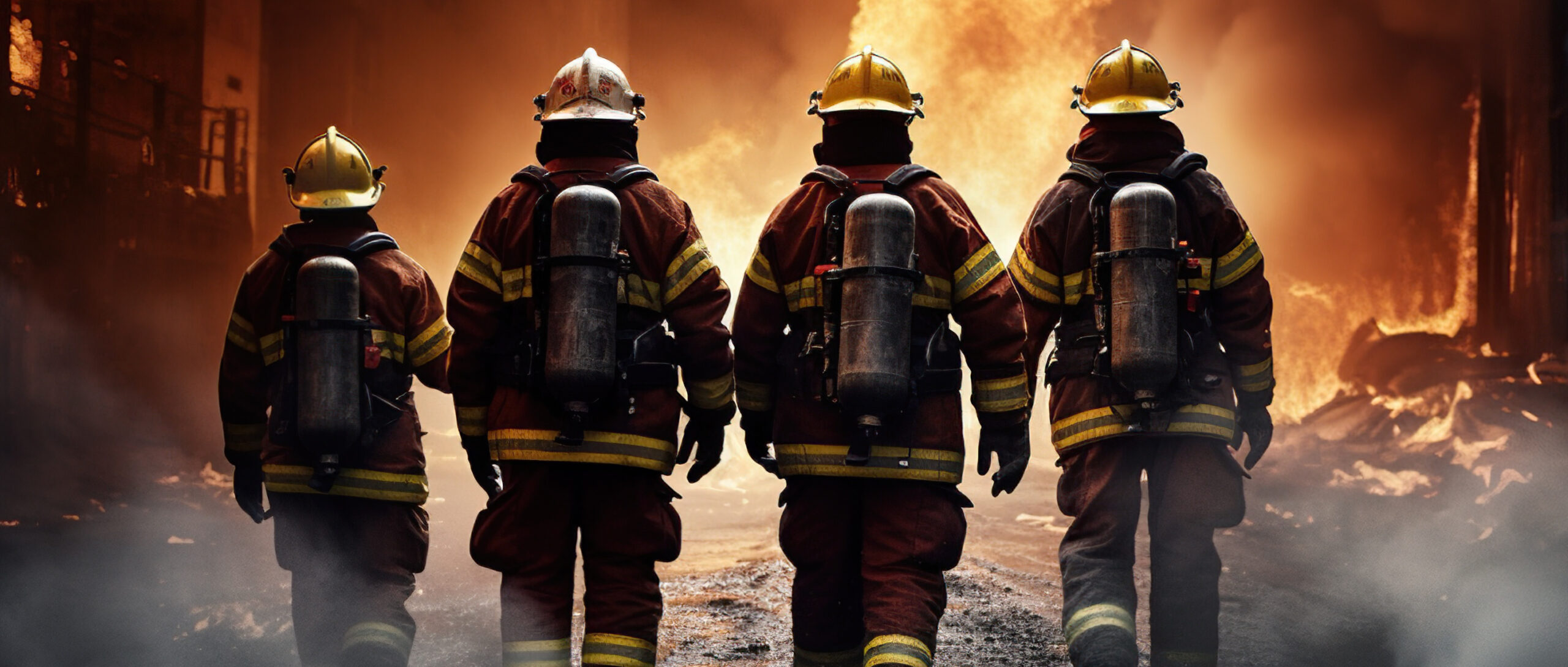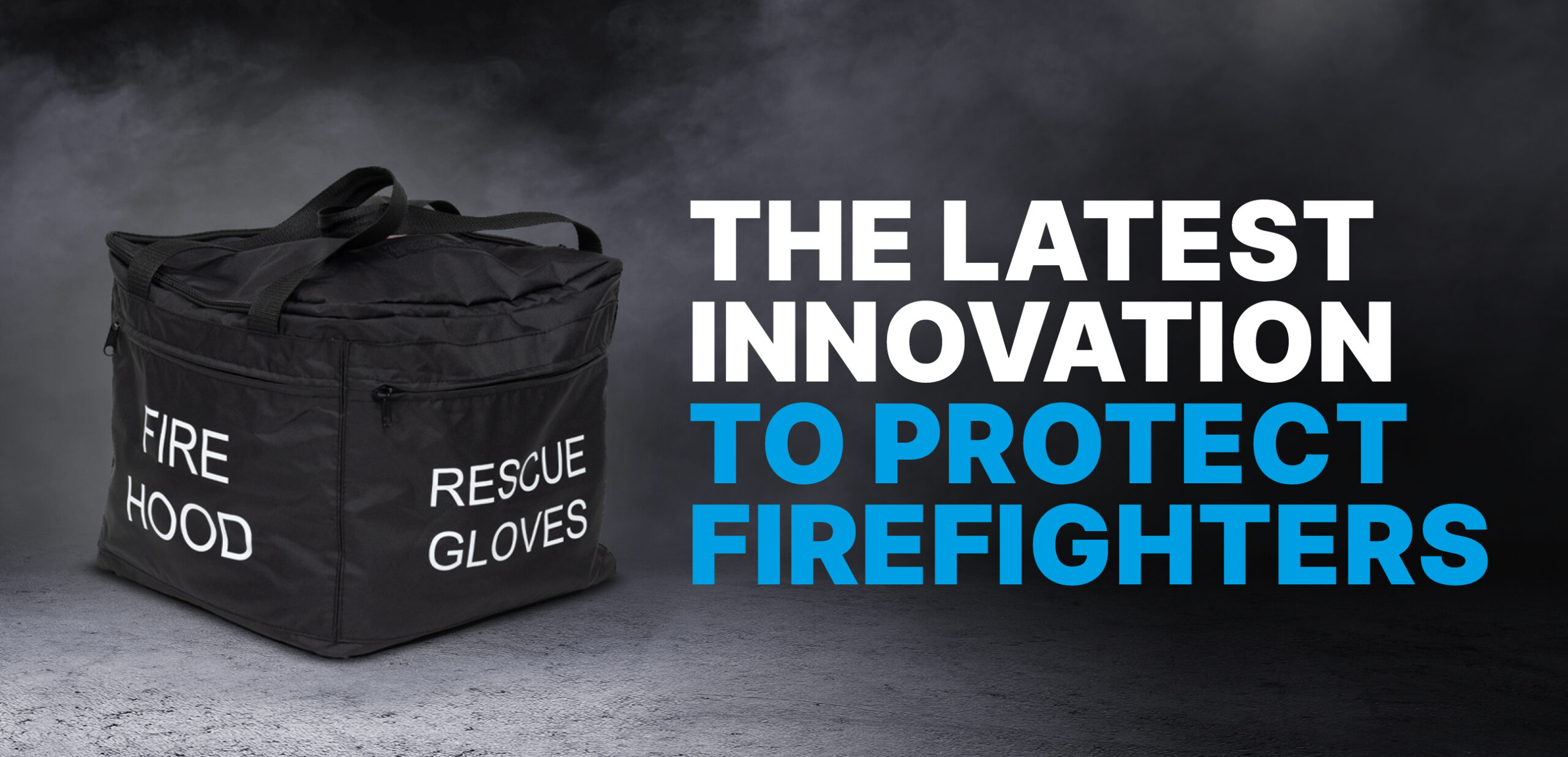Firefighters face greater dangers than those simply resulting from fire itself, for example, burns, smoke inhalation, or being injured by falling debris. They are also exposed to insidious, often invisible dangers from chemicals and substances resulting from fire, smoke, combustion products, fire station dust, diesel exhaust, and contaminated fire equipment and gear.
One of the most significant risks firefighters face is exposure to polycyclic aromatic hydrocarbons, or PAHs, which are a family of chemicals that are known to have the potential to cause cancer. Having high-quality PPE is crucial to protecting firefighters from contamination. In this article, we list some of the most harmful chemicals and substances firefighters come into contact with regularly.
Benzine C6H6
A recognised carcinogenic is a natural constituent of petroleum. It is colourless and highly flammable. It is linked to bone marrow failure, leukaemia, and heart disease. As early as 1948, the American Petroleum Institute declared that there was no safe level of exposure to Benzine.
Exposure to high levels of Benzine can result in a person suffering the following signs and symptoms within minutes to several hours:
• Drowsiness
• Dizziness
• Rapid or irregular heartbeat
• Headaches
• Tremors
• Confusion
• Unconsciousness
• Death (at very high levels)
Toluene C6H5CH3
Absorbed through the skin and through inhalation, Toluene is irritating to the eyes, skin, and respiratory tract. Exposure can cause Toluene poisoning. Symptoms include:
• Headaches
• Dizziness
• Drowsiness
• Hallucinations
• Seizures
• Coma
Long-term toluene exposure is often associated with effects such as psychoorganic syndrome; visual evoked potential (VEP) abnormality; toxic polyneuropathy, cerebellar, cognitive, and pyramidal dysfunctions; optic atrophy; hearing disorders, and brain lesions.
Although less toxic than benzine, even low to moderate inhalation levels can result in tiredness, confusion, weakness, and nausea, none of which are conducive to the energy and concentration levels needed by firefighters to ensure their own safety and that of others.
Sulfur Dioxide SO2
Firefighters are regularly exposed to Sulfur Dioxide, especially when fighting industrial fires. Research shows that even low-level exposure to the gas (which is used as a chemical weapon of war) can result in respiratory mortality.
Hydrocarbons
Hydrocarbons are colourless and almost odourless organic compound consisting of hydrogen and carbon. Types of hydrocarbons include:
• Methane
• Ethane
• Propane
• Hexane
• Octane
• Dodecane
Particulates
Firefighters can be dangerously exposed to small particles found in soot and smoke. The International Agency for Research on Cancer recognises soot as a Group 1 carcinogen.
Particulates enter the body through inhalation and the skin. The face and neck are particularly vulnerable to exposure.
Polycyclic Aromatic Hydrocarbons (PAHs)
Comprising over 100 chemicals, 17 PAHs have been identified as causing significant health problems in humans. These are:
• acenaphthene
• acenaphthylene
• anthracene
• benz[a]anthracene
• benzo[a]pyrene
• benzo[e]pyrene
• benzo[b]fluoranthene
• benzo[g,h,I]perylene
• benzo[j]fluoranthene
• benzo[k]fluoranthene
• chrysene
• dibenz[a,h]anthracene
• fluoranthene
• fluorene
• indeno[1,2,3-c,d]pyrene
• phenanthrene
• pyrene
PAHs are usually not found singularly but as mixtures with many different types present simultaneously.
Long-term studies of people exposed to PAHs alongside other workplace chemicals have shown an increased risk of:
• skin cancer
• lung cancer
• bladder cancer
• gastrointestinal disease
A 2023 study looked at the effects of PAH and per- and polyfluoroalkyl substances (PFAS) on firefighters’ exposure to liver function and serum lipids. It concluded the following:
“The findings from studying both the effects of individual compounds (through linear regression) as well as the effects of complex mixtures (by means of Bayesian weighted quantile sum regression) suggest that increased exposure to these compounds, typical in firefighters, is associated with increased levels of bilirubin (a potent antioxidant with a proposed U-shaped dose-response curve) and increased levels of total cholesterol and low-density lipoprotein (risk factors for developing cardiovascular diseases).”
Can chemicals and substances caught up in turnout gear increase firefighters’ cancer risk?
Studies have shown a significant amount of PFAS remains on every layer of turnout gear. These migrate to untreated layers, including the turnout layer. Therefore, turnout gear itself can be a potential source of PFAS exposure.
Fire Contaminates and Harmful Chemicals
The number of harmful chemicals and substances firefighters are exposed to has been shown in several scientific studies, as have the corresponding health consequences. Therefore, firefighters must take significant steps to protect themselves from contamination. Enduro Protect offers a long-lasting, cost-effective, comfortable, and highly effective way to protect the long-term health of firefighters around the globe. In addition, firefighters who use Enduro Protect base layers are statistically no more likely to be diagnosed with cancer than the general population.
A particular area of vulnerability identified in research on firefighters’ exposure to chemicals and substances is the neck. Due to its unique construction, the Enduro Protect Flash Hood guarantees the highest filtration levels. This woven fabric is constructed with the finest fibres in the submicron size and creates a protective barrier that filters 99.7% of toxic microparticles, helping to prevent firefighters from getting cancer as part of their occupation. Most importantly, it covers the head and neck completely to protect the wearer against PFASs and PAHs.
Enduro Protect – Tried and Tested
We have had the Enduro Protect Ensemble independently tested by Professor Robert Chilcott and the University of Hertfordshire’s Toxicology Research Group. The test involved identifying the protection factor of the undergarment ensemble (R52R and R045N) when worn on an animated robot in a smoke chamber contaminated with carbonaceous (soot) particles. Notably, no turnout gear was worn on top of the baselayer, which meant it was fully exposed to the elements.
The test showed a statistically significant reduction in aerosol penetration, achieved over the one-hour duration of exposure.
Using Enduro Protect as a primary prevention means firefighters are automatically protected from harm in all situations, and the amount of skin decontamination necessary is considerably reduced or removed entirely. This simple measure can make the difference between suffering a severe and life-threatening illness in later life due to short and long-term exposure to harmful chemicals and substances and remaining free from disease.
To discuss any points made in this article, please call the Enduro Protect team on 01235 814112 or email us via [email protected]











